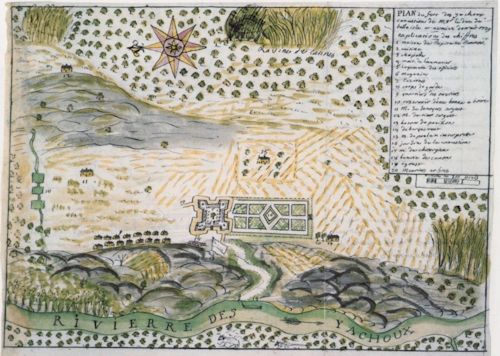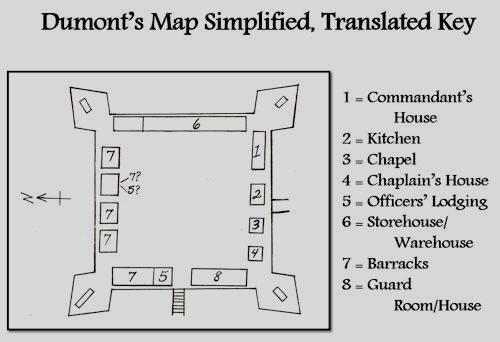|
DONATE TO HIGHWAY MARKER FUND FOR FT. ST. PIERRE
UPCOMING
EVENTS
SIGN UP FOR
E-MAIL OR TO BE A VOLUNTEER
VOLUNTEER SITE CLEANUP DAY
SUCCESS

When local folks are asked what
they know about the rapidly approaching 300th
anniversary of the French establishing, a fort and
settlement here in Warren County in 1719, the response
is often something like, ď I never heard of Fort St.
Pierre." Given the scant recognition the Fort has
received over the years, it is not surprising that so
many are so unaware of itís historical importance.
Exceptions to this general lack of
awareness include a great little 1931 booklet, now long
since out of print, that described Ft. St. Pierre and
other historical sites in the area. There is also a
wonderful diorama of Fort St. Pierre commissioned by
Gordon Cotton about 1975 and still on exhibit in the Old
Courthouse Museum.
A third important recognition of
our local French heritage came with the decision of the
Colonial Dames of the Seventeenth Century to name their Vicksburg
chapter in honor of Fort St. Pierre. These appropriate
gestures have helped to prevent the site from falling
into historical oblivion.
Equally surprising to many is that Ft. St. Pierre is one
of only two sites of the French and Indian period to be
designated National Historic Landmarks in Mississippi (NHL). These are
sites that possess exceptional value or quality in
illustrating or interpreting the heritage of the United
States. The other historic, archaeological site
designated a NHL here in Mississippi is the Natchez
Grand Village.

Click
here
for a larger view of this map.
Click
here to see the Old Court
House diorama of Fort St. Pierre
and read the OCH account of Fort St. Pierre.
The prized NHL designation is largely a function of the
collective efforts of a group of archaeologists
beginning about 1974 and continuing down to today. The
lionís share of their efforts was the field work,
laboratory analysis and archival research of Dr. Ian
Brown and his students at the University of Alabama,
Tuscaloosa.
Brown convincingly argued that Fort
St. Pierre was a vital link in the chain of French
military posts and settlements comprising the vast land
holdings of the French Atlantic Empire, an empire
consisting of thousands of square miles and thousands of
people, including French military forces, settlers,
traders, slaves and Native Americans.
Fort St. Pierre was a critical
buffer between the Lower Mississippi River French
colonies and those to the north in the Illinois country
and Canada.
The fortuitous preservation of the
forts ruins, followed by a rapidly accumulating
protective ground cover and lack of serious 19th and
20th Century land disturbances, has left an
extraordinarily rich archaeological record, seldom
replicated at other more seriously disturbed sites.

Map Credit: Lisa Marie Malischke
2015 Heterogeneity of Early French and Native Forts,
Settlements and Villages: A Comparison to Fort St.
Pierre (1719-1729) in French Colonial Louisiane.
That rich record is producing a
plethora of new information on this important era and
the lifeways of those who inhabited Fort St. Pierre. What
is being learned in this collective research is far
beyond the scope of this web site. The fascinating story
begs to be revisited over and over in many media and
forms.
Join us as we execute the planning
process to celebrate the 300th Anniversary of our Fort St. Pierre in 2019.
Frederick L. Briuer, Ph. D.
Chair
Fort St. Pierre Tercentennial Planning Commission
|